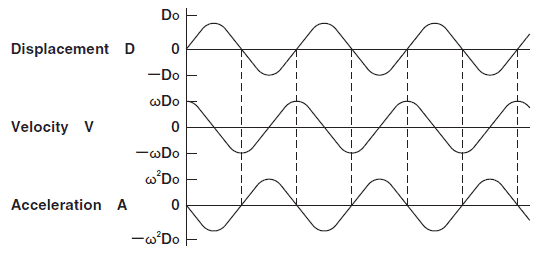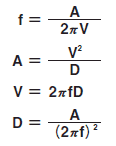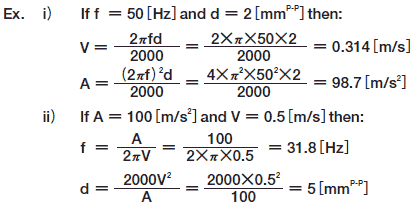That is to say, when the acceleration of 1 [m/s 2 ] is applied to a mass of 1 [kg], the required force is 1 [N]. And gravity acceleration “G” equals to 9.8 [m/s 2 ].
Assume here we have an object moving on sine wave. The displacement is;

The velocity is found by differentiation of the displacement. Therefore;

The acceleration is found by differentiation of the velocity. Therefore;

As we substitute

we obtain formulas indicated only in amplitude;

Followings are waveforms for displacement, velocity and acceleration.

We get below formulas by transforming above.

In vibration test field, we use “d [ mmp-p ]” for the peak to peak displacement.
So all the above formulas are substituted by “D = d / 2000”.

Let's try examples;

|